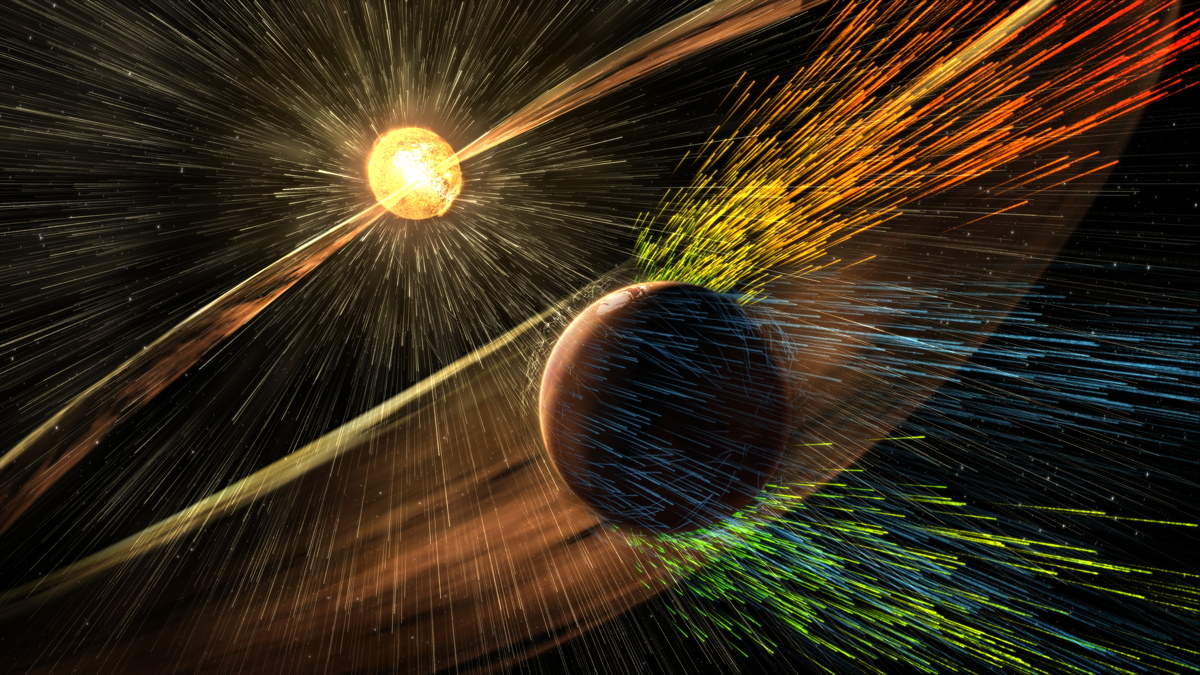Introduction
NASA’s MAVEN spacecraft has made a groundbreaking discovery that explains why Mars transformed from a once wet and potentially habitable planet into the cold, dry, airless world we see today Mars lost its atmosphere. The key process? A phenomenon known as atmospheric sputtering. This direct observation has provided critical evidence confirming how solar wind stripped away the Martian atmosphere, forever changing the Red Planet’s climate and potential for life.
What Is Sputtering?

Sputtering occurs when high-energy particles from the solar wind crash into the upper atmosphere of a planet. On Mars, these energetic ions hit neutral atoms in the thin atmosphere and transfer energy so forcefully that the atoms are knocked into space — escaping the planet’s gravity.
“It’s like doing a cannonball in a pool,” explained Shannon Curry, principal investigator of the MAVEN mission. “The heavy ions are the cannonball. They crash into Mars’ atmosphere, splashing neutral particles out into space.”
MAVEN’s Key Findings
- MAVEN has directly detected atmospheric sputtering on Mars for the first time.
- The sputtering rate is four times higher than earlier models had estimated.
- Argon maps from nine years of MAVEN data show that solar wind actively strips Mars’ atmosphere, especially during solar storms.
Why It Matters: Mars’ Lost Climate
Billions of years ago, Mars had rivers, lakes, and perhaps even oceans. That kind of environment would have required a thick atmosphere capable of trapping heat and supporting liquid water. But without a magnetic field to shield it, Mars was left vulnerable to the Sun’s harsh solar wind.
The sputtering process, especially in the early solar system when the young Sun was more active, rapidly eroded the Martian atmosphere. As pressure and temperature dropped, surface water disappeared, and the planet became uninhabitable.
The Role of Argon
To trace the effects of sputtering, scientists studied argon gas, a noble gas that does not react chemically and is a perfect tracer for physical escape processes. By mapping argon distribution across the Martian atmosphere over time, MAVEN confirmed that atmospheric escape was happening far more aggressively than previously thought.
What’s Next for Mars Science?
The MAVEN discovery opens the door for more targeted studies of climate evolution on Mars and other planets. It also plays a key role in future missions looking to understand the habitability of early Mars and what it might teach us about similar processes on Earth, Venus, or exoplanets.

NASA and its partners will continue to use MAVEN’s data to refine climate models, explore the impact of solar activity on planetary evolution, and help guide future missions in search of past life on the Red Planet.
Conclusion
Thanks to MAVEN’s detailed observations, scientists now have hard evidence of how Mars lost its once-thick atmosphere. Sputtering caused by solar wind has been confirmed as a primary driver behind the Red Planet’s drastic transformation. This breakthrough not only rewrites our understanding of Mars but also provides insights into the vulnerability of planetary atmospheres — both in our solar system and beyond.









